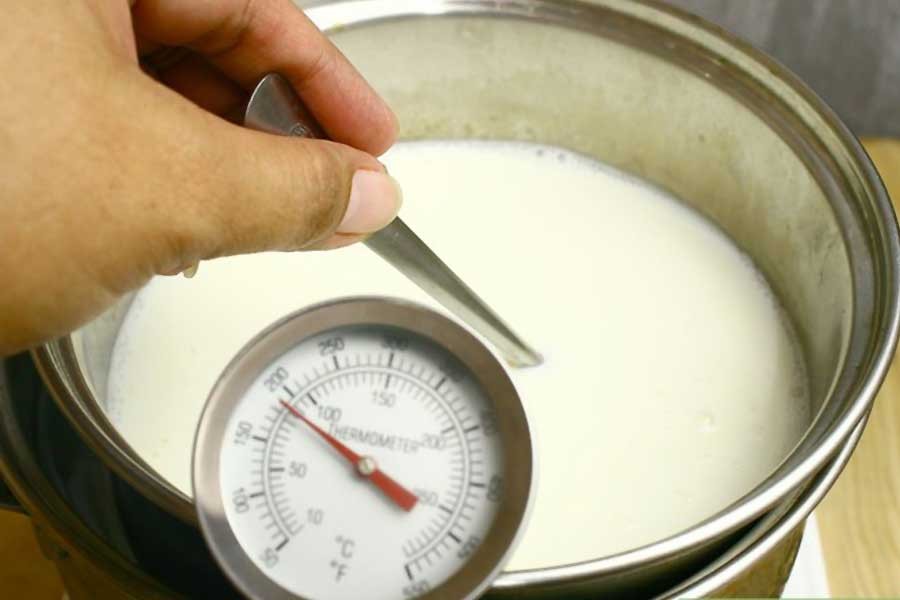More than 75 per cent of all pasteurised milk available in the local market is unsafe for direct consumption, according to findings of a study revealed Wednesday.
At every stage of the dairy value chain from the farm level to stores, milk is found to be highly contaminated with bacteria above the national and international standards. However, this can only be dangerous, if consumed 'raw' (unboiled), which is often practised in Bangladesh.
CARE Bangladesh funded the research through its 'Strengthening the Dairy Value Chain (SDVC)' project. It was conducted by Dhaka-based international health research institute ICDDR,B in 18 upazilas in Bogura, Gaibandadha, Nilphamari, Dinajpur, Joypurhat, Rangpur and Sirajganj.
The findings were published in the International Journal of Food Microbiology.
With the aim to assess the microbiological quality of milk at different stages of the dairy value chain, 438 raw milk samples were collected from producers, collectors, chilling plants and local restaurants in the northern part of Bangladesh. Additionally, 95 samples were collected from commercially-processed milk found on the shelves of local retail stores in Dhaka and Bogura.
Scientists found that at the primary producers' level, 72 per cent and 57 per cent milk samples collected were contaminated with coliform (= 100 CFU/ml) and faecal coliform (= 100 CFU/ml) bacteria, respectively. Of the samples, 11 per cent were contaminated with a high level of E. coli (= 100 CFU/ml). The faecal coliform bacteria is deemed a hygiene indicator. Presence of the bacteria in milk indicates it has been contaminated with pathogens or disease-producing bacteria or viruses, which can also exist in faeces of warm-blooded animals.
At the collection points, samples were found to be contaminated with a high level of coliform bacteria (= 100 CFU/ml) and faecal contamination (91per cent). More than 40 per cent of samples had a high E. coli count.
At the chilling plants, samples were found to be contaminated even at a higher rate than those at collection points. Samples from all 15 chilling plants distributed in five districts were contaminated with high levels of coliform and faecal coliform.
E. coli was found in samples from all chilling points. Sixty-seven per cent of samples were contaminated with a high level of E. coli.
Presence of some other bacteria such as B. cereus and staphylococci was also found in the samples but within the normal limit. Bacterial counts in milk gradually increase from the producers' level to the chilling plants. The increase continues up to the consumers' level (e.g. local restaurants).
Another cause of concern is that scientists have found about 77 per cent of all pasteurised milk samples with high total bacterial counts (aerobic plate count) , which go beyond the standards of the Bangladesh Standards and Testing Institution (BSTI) set at =2.0X104 CFU/ml.
On the other hand, 37per cent and 15 per cent of the samples were found to be contaminated with coliform and faecal coliform bacteria respectively. Pasteurisation is done to kill pathogenic bacteria to make milk safe for consumption.
Speaking about what these findings mean for consumers, Dr Mohammad Aminul Islam, Associate Scientist and head of the Food Microbiology Laboratory at ICDDR,B said, "Raw or pasteurised milk available in the market is found to be contaminated with disease-causing organisms and should not be consumed without thorough boiling. However, samples from UHT milk were found to be devoid of any microbial contamination and thus safe for direct consumption. However, in this study we did not test the milk for chemical contamination or adulteration."
Commenting on the dairy value chain assessment, the Principal Investigator of the study said, "The presence of bacteria in milk at different stages indicates that the core quality of milk-its nutrition-is highly compromised. Our studies show that several factors are involved in the contamination of milk at the primary producers' level including the breed of the cow, volume of milk produced by the cow, the time of milking, and farmers' hand washing practices."
They recommended that Bangladesh's dairy companies have end-to-end compliance with hygienic milking practices. Standard collection, delivery, preservation and pasteurisation practices also need to be ensured for making safe and nutritious milk available for all. Maintenance of seamless cold chain throughout the distribution channel of pasteurized milk from the factory to the consumers' level is also critical for ensuring safe milk for consumption.


